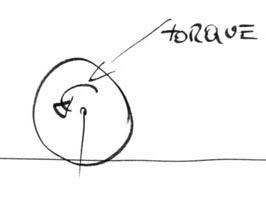|
When you plan on putting larger wheels on a 4WD -
Why would you need more moving force?
Picture an imaginary lever arm between the center of your wheel and the ground.
The engineers of your car have carefully calculated the torque of your engine, the gear ratios of your transmission, the gear ratios of your transfer case, and the gear ratio of your differentials in relation to vehicle weight and tire size (they care only about the radius - the "lever arm" in our example here). The engineers did all this to give you pleasing acceleration and good off-road performance with a low crawl ratio.

If you would later put large tires on your vehicle and the radius/lever arm increases your moving force decreases proportional to the increase of the radius/lever arm. This results in sluggish acceleration and a fast crawl speed plus less torque to climb obstacles. If you have a vehicle with a weak engine - larger tires will absolutely kill your performance. And your clutch!

Solution:
In order to regain decent moving force you will need to modify your drive system. To put in an engine with more torque will only partially solve the problem. The delicate balance between engine rpm, fuel consumption, smooth shifting and good off-road performance is still way off.
The only way to regain what you lost is by recreating the same (or better) gear ratio/crawl ratio that the engineers had in mind. That is done mainly by installing lower (numerically higher) differential gears.
So, to adjust for larger tires you will need lower gears (numerically higher).
As a rule of thumb you can expect to lose about 3.5% of torque/gear ratio for every inch of tire size increase.
For example, if you replace your stock tires of 28" with 35" tires your loss is 7 x 3.5% = 24.5%. If your stock gear ratio in your diffs is 4.9:1 you will have to get lower diff gears that are numerically about 25% higher. 4.9 x 25% = 1.225 - so, your new gears should be 6.125:1
The gear ratio examples I have used here, were for a Mercedes G - and Mercedes offers diff gears that are pretty close to that desired number - 6.17:1
If you don't have a calculator - or don't know how to use one, here is a web site that helps you find the right gears.
I have also described the procedure of fitting larger 35" tires to my Mercedes G.
|
|
|